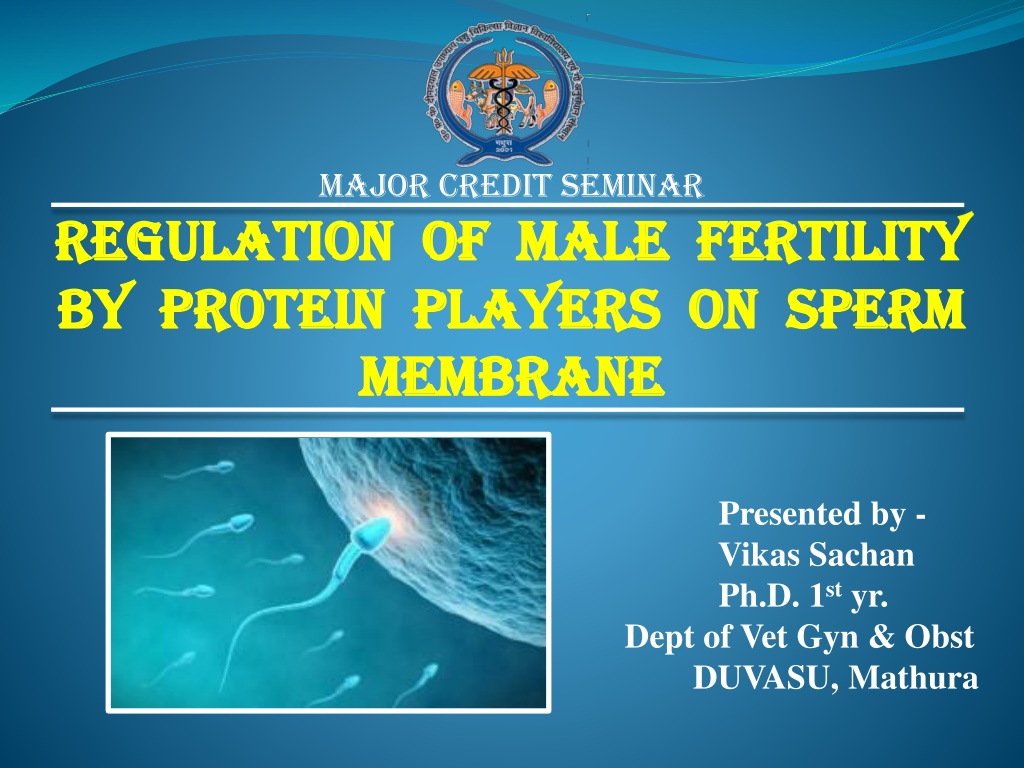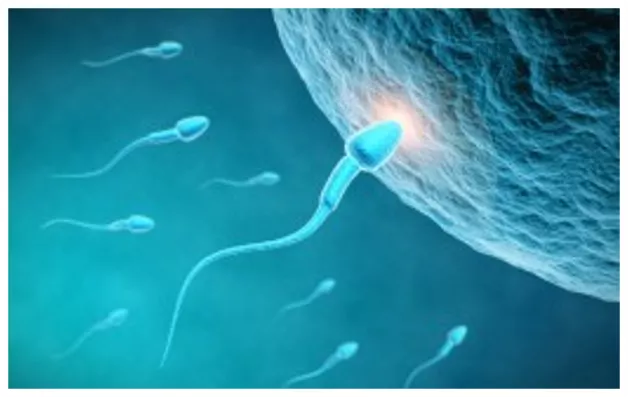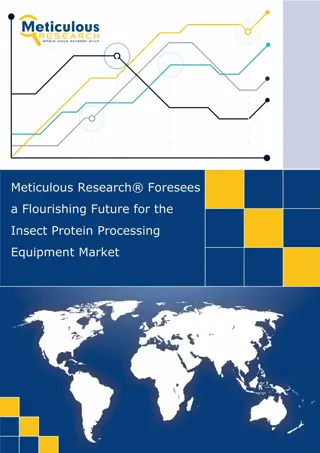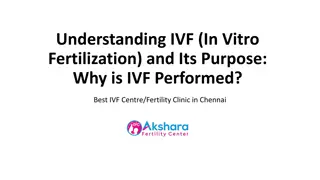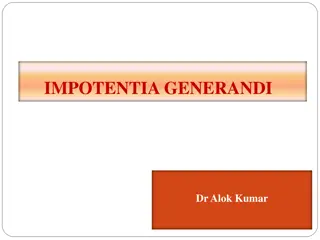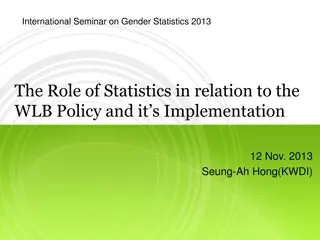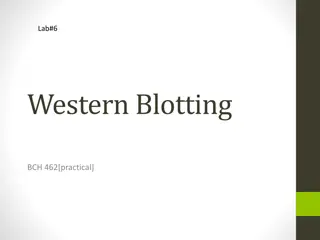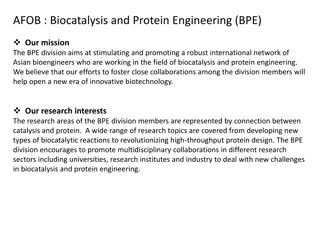Protein Players in Male Fertility Regulation
Cooperative interactions between proteins on sperm membranes play a crucial role in male fertility regulation, affecting sperm migration, binding to the oviduct, and successful fertilization. Understanding these protein factors is essential for comprehending the complex process of mammalian fertilization.
Download Presentation

Please find below an Image/Link to download the presentation.
The content on the website is provided AS IS for your information and personal use only. It may not be sold, licensed, or shared on other websites without obtaining consent from the author.If you encounter any issues during the download, it is possible that the publisher has removed the file from their server.
You are allowed to download the files provided on this website for personal or commercial use, subject to the condition that they are used lawfully. All files are the property of their respective owners.
The content on the website is provided AS IS for your information and personal use only. It may not be sold, licensed, or shared on other websites without obtaining consent from the author.
E N D
Presentation Transcript
Major Credit seminar Regulation of Male fertility Regulation of Male fertility by protein players on sperm by protein players on sperm membrane membrane Vikas Sachan Ph.D. 1st yr. Dept of Vet Gyn & Obst DUVASU, Mathura Presented by -
Overview Introduction What are the proteins on spermatozoa to regulate its function How they interact to each other Their regulatory role on fertility Conclusion
INTRODUCTION Mammalian fertilization - Coordinated events like sperm deposition - Anterior vagina in cow, sheep, dog - Cervix in sow - Uterus in horse and rodents Complex interactions between the spermatozoa and the female reproductive tract (sperm migration) (adhesion/binding and release from oviduct) ( sperm race is no longer a tenable hypothesis) (Holt and Fazeli, 2016) ZP binding and penetration and the fusion of sperm with oocyte
Very less no. of sperm can cross the uterotubal junction (UTJ) and reach to ampullary-isthmus junction (= 10%) (Tokuhiro et al., 2012; Suarez, 2014) Crossing/ migration through UTJ is a critical step - Verified by using modified mice models (Tokuhiro et al., 2012) Passage through the oviduct - selective processes - Eliminate poor quality sperms - Regulate the numbers of sperm - Reducing polyspermic fertilization (Suarez, 2014)
Uterotubal junction - Tortuous and narrow cattle / mice (Wrobel et al., 1993) - Mucosal folds : cul-de-sac in cow (Yaniz et al., 2006) - Sigmoid shape bovine (Hafez & Black, 1969) - Interdigitation of microvilli - Smooth muscle contraction - Wall fluid engorgement - Mucus in cattle (Suarez et al., 1997) Restricted entry of infectious agents and leukocytes & Regulation of sperm entry
Sperm Factors for successful fertilization - Gene targeting studies in mice Different sperm proteins (biochemical analyses) - Migration, ZP binding and fusion (Yamaguchi et al., 2006) Certain proteins on sperm head plasma membrane - Transit through uterotubal junction (UTJ)/ reach the oviduct (Shen et al. , 2013; Fujihara et al., 2014)
In mice (Nakanishi et al. 2004, Yamaguchi et al., 2009) In cattle (VanDemark & Moeller, 1951) In sheep (Mattner & Braden, 1963) In humans (Kunz et al., 1996) In rabbits (Overstreet & Cooper, 1978)
The null mice models presenting Adam 1 (Nishimura et al., 2004) Adam 2 (Cho et al., 1998) Adam 3 (Shamsadin et al., 1999) Calmegin (CLGN ) (Yamagata et al., 2002) Calreticulin (Ikawa et al., 2001) Calsperin (CALR 3) (Holt and Fazeli, 2016) Tpst2 (Marcello et al., 2011) Pdilt (Tokuhiro et al., 2012) tACE (Hagaman et al., 1998) All are : Male infertility phenotypes (Marcello et al., 2011)
The ADAMs (fertilin) (sperm membrane proteins) (zinc protease superfamily) - Contain a disintegrin and metalloproteases domain - 40 members of this family - Distributed in a variety of tissues - Testis/sperm-specific members 3 are predominantly expressed in the testis ADAM1 (fertilin / PH-30 ) a disintegrin and metalloproteases domain 1 ADAM2 (fertilin / PH-30 ) a disintegrin and metalloproteases domain 2 ADAM3 (cyritestin)
All members of ADAM family - Membrane anchored - Possess domains : pro, metalloprotease-like, disintegrin, cysteine-rich, EGF repeat, transmembrane, and cytoplasmic tail In mice Isoforms of ADAM1 - ADAM1a and ADAM1b (Nishimura et al., 2002) ADAM1a and 1b - resides in the endoplasmic reticulum of TGCs (Kim et al., 2003) ADAM2 - located on the plasma membrane overlying the acrosome on mature sperm (Cho et al., 1998)
Bovine fertilin (complex of 2 membrane bound sub units and ) subunit is mapped to Adam1 (17th chromosome) subunit to Adam2 (27th chromosome) Role for the disintegrin domain of fertilin (removes the pro- and metalloprotease domains, leaving N- terminal disintegrin domains in processed form in matured sperm surface in the epididymis) to the egg plasma membrane via an integrin ( 6 1) (Immunofluoroscence and immunoblotting) (Almeida et al., 1995)
Both ADAM1a and ADAM1b - form a heterodimer with ADAM2 (CLGN mediated) ADAM1a/ADAM2 (t-fertilin) . found (only in ER) in testis / TGCs (Kim et al., 2006) ADAM1b/ADAM2 (s-fertilin) . on cauda epididymal sperm surface (in ER & cell surface) (Kim et al., 2003) ADAM3 - Sperm-surface protein - Post-translational modification during the epididymal transit (Kim et al., 2006) - Bind directly to solubilized ZP (as a biologically significant ZP ligand) (Kim et al., 2005)
t-fertilin (ADAM1a / ADAM2) disrupted mouse - - Disappearance of ADAM3 (Nishimura et al., 2004 ) (no maturation of ADAM 3/no transfer from ER to sperm surface) (Yamaguchi et al., 2006) - Normal spermatogenesis in the testis - Defects in migration Through UTJ - Could not bind to zona pellucida (Stein et al., 2005) ADAM2 - deficient mice - Reduced levels of ADAM1b in TGC - Reduced level of ADAM3 (cyritestin) in sperm - No formation of ADAM1a/ADAM2 or ADAM1b/ADAM2 (Nishimura et al., 2007)
ADAM3 remained the same on ADAM1b/ADAM2 (s-fertilin) disrupted sperm (But not on t-fertilin disrupted sperm) t-fertilin is the crucial factor for sperm to acquire the zona-binding ability (s-fertilin is not) (Nishimura et al., 2004 ) Disruption of Adam3 - loss of zona-binding ability i.e. ADAM3 is the most close factor involved in sperm zona binding (Nishimura et al., 2004 )
Loss of ADAM3 from Adam2-null TGCs - Occur in a post-Golgi compartment or - By proteolytic release or - Degradation .. immediately upon arrival at the plasma membrane (i.e. ADAM3 is present at normal levels on Adam2-null TGCs but not in mature sperm) ADAM2-ADAM3 complex - ZP ligand which bind to directly to solublized ZP. (By immunoblotting and immunoprecipitation) (Nishimura et al., 2007)
Adam3 / spermatozoa (also Adam1a / ) - Can fertilize ZP-intact eggs in vitro if they were surrounded in cumulus oophorus cells (Nishimura et al., 2004) Spermatozoa lacking ADAM3 - - Fertilize eggs effectively in vivo when capacitated sperms were directly deposited into the oviduct (Tokuhiro et al., 2012)
Adam1a and Adam2 knockout sperm (not Adam3 null) - Impaired in migration from the uterus to the oviduct
However, in Adam3-disrupted mouse line - Normal Sperm migration into the oviduct - No zona binding (Kim et al., 2005) (observation by tagging sperm with transgenically expressed green fluorescent protein (GFP) in sperm acrosome, visualization of sperm in the oviduct by fluorescence dissection microscopy) (Nakanishi et al., 1999)
All these models converge in the lack of ADAM3 from mature sperm surface (cysteine-rich, glycosylated membrane protein) (No uterotubal transport, no zona binding - infertility) (Keizo et al., 2012) Above phenotype may be compensated by tansgenically expressed ADAM3 (Yamaguchi et al., 2009)
Both spermZP binding and spermoviductal epithelium binding consist of carbohydrate-mediate interactions Endoglycosidase studies - Presence of sugars on bovine fertilin (Waters and White, 1997) While fertilin -no potential carbohydrate-binding domain Possible that multiple proteins act in concert with fertilin to bind the oligosaccharide chain of ZP3 and oviductal epithelium) (Nakanishi et al., 1999)
On surface fractions of TGCs - - A complex of ADAM2 / ADAM3 / calnexin (Nishimura et al., 2007) Absence of Clgn, Adam1a, Adam2, Adam3,or Ace genes - Might affect the binding of BSP to sperm (Okabe, 2013)
ADAM2 and ADAM3 regulates - protein expression or integrity of the two sperm surface ADAMs (ADAM5 and ADAM7) (Kim et al., 2006) May have critical roles in the process of fertilization.
Calmegin (CLGN) Calmegin (CLGN) testis-specific molecular chaperone (= 95% to calnexin) - Lies in the lumen/surface of rough ER - Encoding gene on chromosome 17 in bovines (Hagaman et al., 1998) - Expressed during spermatogenesis i.e. active in testicular spermatogenic cells - Absent in mature sperm (Yoshinaga et al., 1999) Specifically interacts with ADAM1a, ADAM1b, ADAM2 (responsible for fertilin and expression) (Ikawa et al., 2001)
Clgn - Deficient Mouse - ADAMs are Present in Testes But Not in Sperm - No ADAM1a/ ADAM2 and ADAM1b/ ADAM2 heterodimer (direct involvement : immunoprecipitation) - No ADAM 3 expression on sperm surface (Yamaguchi et al., 2006) - No UTJ transit with No ZP binding (Nakanishi et al., 2004)
Calmegin-knockout sperm - May result in failure to acquire such proteins required for oviduct epithelium attachment may lead to failure of sperm entry (Nakanishi et al., 2004) Clgn-Deficient Mouse normal tACE presence i.e. no effect on tACE (Yamaguchi et al., 2006) CLgn and CALR 3 (Calsperin) - Maturation of ADAM 3 (Nishimura et al., 2007)
CLGN - -/ /- - sperms - unable to pass through the UTJ (even with presence of wild-type sperm from the same ejaculate) Sperm must be individually responsible for their passage into the oviduct (Nakanishi et al., 2004) Transgenic GFP-tagged green sperm Clgn-knockout mice (to trace the migration in oviduct) (Yamaguchi et al., 2009)
Clgn + / + Clgn - / - Sperms in oviduct; fluorescence; (Nakanishi et al., 2004)
Clgn, Adam1a, Adam2, and tAce disrupted mouse line - Normal morphology and motility (Ikawa et al., 2001) - Failure of sperm migration into the oviduct - Poor/no zona binding - No fusion with oocytes (Yamagata et al., 2002) INFERTILTY
PDILT An ubiquitous PDIs (Protein disufide isomerase) - Testis specfic PDI-like protein (PDILT) (expressed in germ cells) - Interact with CLGN and CALR 3 in TGC - Role in maturation of spermatid protein - Disulfide formation in the ADAM3 . male fertility in vivo (van Lith et al., 2006)
PDILT knockout mice sperms No Interaction with CLGN and CALR 3 in TGC No PDILT/CALR3 complex Lacking/ no maturation of ADAM3 No transportation to sperm surface Can not migrate through the UTJ (Sperm tagged with Acr3-EGFP & CAG/ su9-DsRed2) Can not bind to the ZP INFERTILE MALES (Tokuhiro et al., 2012)
Prss37 - Putative trypsin-like serine protease - Exclusively expressed in the testis of adult mice (immunohistochemistry, immunofluoresce) - Especially in the elongating spermatids i.e. during spermiogenesis - Absent in mature sperms - Regulate post-translational modification of ADAM 3 (Shen et al., 2013)
Mice deficient for Prss37 - - Undisturbed testis development - Normal mating activity, - Normal spermatogenesis, - Normal sperm morphology, and motility BUT - No expression of ADAM 3 on sperm surface - Defect in sperm migration through oviduct - Impaired zona binding INFERTILITY (Shen et al., 2013)
tACE / gACE (testicular/germinal Angiotensin-converting enzyme) Renin angiotensin system (RAS) - Regulates blood pressure (De Gasparo et al., 2000) - Pancreas (Leung & Carlsson, 2001) - Female & male reproductive systems (Speth et al., 1999)
Location of RAS components as - Angiotensinogen on Testis (Leydig cells); epididymis; prostate - Renin on Leydig cells; epididymis; prostate - ACE on Leydig cells; seminiferous tubules; epididymis; prostate; spermatozoa; seminal plasma - Angiotensin II on Testis; epididymis; prostate; seminal plasma - Angiotensin receptors: AT1a, AT1b on Testis (Leydig cells); epididymis; vas deferens; prostate; sperm
RAS system - isolated from the plasmatic RAS by the blood testicular barrier (which protects fertility from - AT1 blockers - ACE inhibitors. (Anthony et al., 2017) Angiotensin I (central action) Angiotensin II - Sperm survival - In the bovine oviduct - local immunological response against allogeneic sperms (Modulating the phagocytic activity of neutrophils) (Marey et al., 2016)
ANG II Physiomorphological alterations in the infundibulum, ampulla, and isthmus Ideal micro-environment for - Oocyte transport and maturation - Sperm capacitation and transport - Fertilization - Early embryonic development (Marey et al., 2016)
Study of ACE - Anti-ACE antibodies, radiolabeled ACE inhibitors, simplified ACE assay (Das and Soffer, 1976) Affect many physiologic processes blood pres sure control, hematopoiesis, reproduction, renal function , and immune response (Kenneth et al., 2013)
Same gene encodes : Two isozymes - sACE and tACE/gACE (Corvol et al., 2004) Somatic ACE (sACE) - Vascular endothelium, Epididymal epithelium, Proximal tubules of the kidney, Small intestinal epithelium, Alveolar macrophages , Neuronal cells In body fluids in a soluble form (CSF/serum/semen etc) .Involvement in multiple biologic processes (Metzger, 1999)
tACE/gACE (Testicular or Germinal ACE) Immunodetection (Zn peptidase) MW 105 -110 kDa (mice) MW 60-70 (Horse and Dog) (Me tayer et al., 2002) Peptidyl-dipeptidase A or kininase II or CD143, or EC 3.5.15.1. Immunologic approaches catalytic domains testis ACE (single domain) in male germ cells somatic ACE (double domain) .. in the epididymal epithelium, cells of the vas deferens, seminal fluid (Kondoh et al., 2005)
tACE / gACE - In developing (late pachytene) and mature sperms - Seminal plasma, residual bodies, cytoplasmic droplets of epididymal sperm (K hn et al., 1998) - Express in postmeiotic developing male germ cells (found in round and elongated spermatids) - no other tissue (Corvol et al., 2004) Immunolocalization in spermatozoa - Entire acrosome, except equatorial segment (Sabeur et al., 2001) Evaluation of the enzymatic activity in the semen of Holstein bulls (Deiler and Jacob, 2012)
Human spermatozoa - Acrosome or entire sperm head, post-acrosomal region, mid-piece, flagellum, equatorial segment, and post-acrosomal (K hn et al., 1998) Rat and mouse - Middle piece of testicular sperm and principal piece of the flagella (Metayer et al., 2002) Rabbit - Around the heads of spermatids and spermatozoa (Brentjens et al., 1986)
Swine - Spermatids and cytoplasmic droplets of epididymal sperms (Yotsumoto et al., 1984) Horse and dog - Periacrosomal region (Sabeur et al., 2001) Bull - Periacrosomal region (Deiler and Jacob, 2012)
Immunolocalization of tACE on bovine sperm (Mouse monoclonal antibody anti-ACE) (Costa et al., 2012)
